The ignition system is at its essence several devices and devices connected into a single electrical network. It is designed to generate an electric spark that, in turn, sets up a mixture of fuel and air in an internal combustion engine at a certain point.
Content
Ignition system where is located
The main part of the ignition system elements are located directly under the hood of the car, namely on its internal combustion engine.

Also under the hood of the car there is a ignition source - a battery. Another integral unit of the ignition system is the ignition lock, which is located directly in the car, on the side of the steering column.
What is the ignition system
The elements of the classic ignition system are:
- Rechargeable battery - is the power source of the entire ignition system;
- Ignition Castle - is at its essence "dispersion" of the electrical circuit of the ignition system;
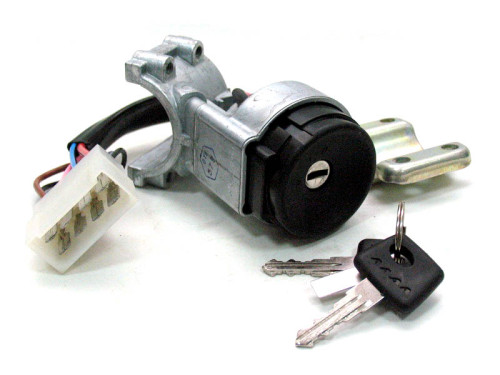
- The ignition coil is also quite often in the circles of motorists referred to as "Bobby". In essence, it is a pulsed transformer that transforms low-voltage voltage into high-voltage;
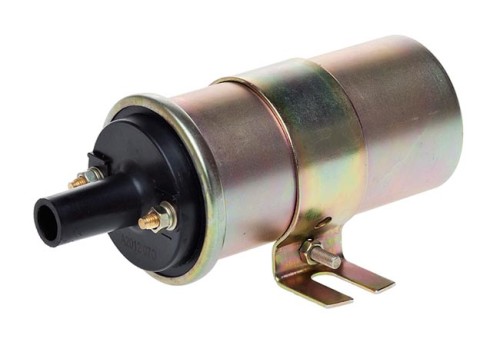
- The ignition distributor is also fairly often in the circles of motorists are called "rubber". Provides at a certain point, the supply of high voltage voltage directly to the spark plugs, to generate a spark.
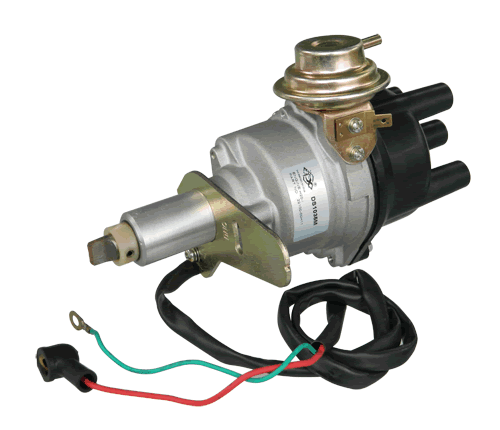
- High voltage wires - in the electrical circuit of the ignition system are used to transmit high voltage electric current. Speakers in the role of the coil connector, distributor and spark plugs.
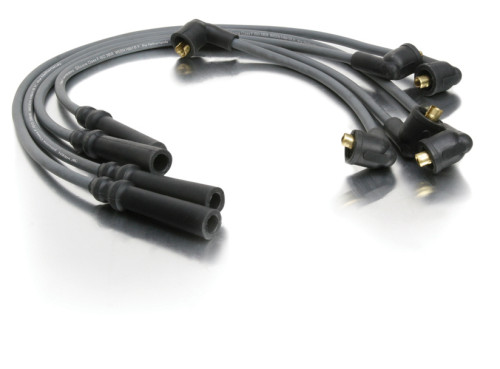
- Spark plugs are located directly in the head of the cylinder block and produce a spark between two electrodes, which serves to ignite the fuel mixture.
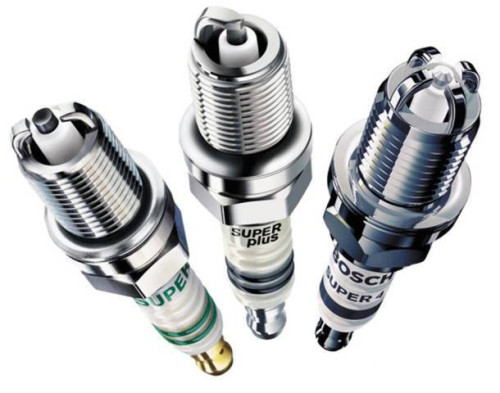
Interesting! High-voltage wires in the ignition system are able to withstand a voltage of 45-50 thousand volts.
How does the ignition system work
The source of the electric current for the ignition system is the battery. When turning the key in the ignition lock (ignition switching on), the electrical current comes directly to the ignition coil.

In the ignition coil, the low-voltage voltage is fed to the primary winding. By means of a magnetic field and electromagnetic induction, an electric current of high voltage (15-25 thousand volts) is formed on the secondary winding of the coil.
From the ignition coil, through high-voltage wires, the voltage enters the ignition distributor. In turn, the ignition distributor submits at the required moment, alternately high voltage on the ignition candle. The supply of high-voltage voltage on the ignition candles occurs through high-voltage wires.
The spark plugs when the high-voltage voltage is applied to them, they produce an electric spark between the central and side electrode, which in turn settles the fuel mixture.
How to check ignition
Malfunctions in the ignition system are carrying a mass owner's problems so, for example: reduce engine power, increase consumption, the engine is hard to start, the car pulls up when driving, and the emission of harmful substances in exhaust gases increases, and much more. Before checking the ignition system, it is necessary to deal with what faults can arise in it.
Faults in the ignition system:
- Violation of the ignition system adjustment;
- Lack of spark;
- A non-permanent spark (this problem most often arises as a result of mechanical damage to wires);
- Pouring the candles (occurs when the engine is started when "sample included" is solved by simple spark plug cleaning);
- Contamination of the contacts of the mechanical interrupter (provided its presence);
- Faulty ignition candles (in more detail about ignition candles can be found here);
- Aging of the ignition coil (over time the insulation of the coil is dissolved);
- Aging high-voltage wires.
ignition Candles, how to check the spark plugs
Before you start checking the candles, it is necessary to turn off directly the ignition itself. Now you can remove the spark plugs of high-voltage wires.
Important! When removing the tips of high-voltage wires with the spark plugs, in no case should not be pulled directly for the high-voltage wire itself.
Disconnecting the high-voltage wire, the spark plugs must be unscrewed using a special candlestone.
Important! Before turning the spark plugs, the space around them must be cleaned of dirt, sand and dust. This is necessary in order to avoid the fall of this garbage directly into the cylinders.
Turning the spark plugs, proceed to their check. First of all, it is necessary to pay attention to their condition and the color of the electrodes. So, for example, a light brown color speaks about a good state of the ignition candle.
Important! The gap between the side and central electrode should be exactly 0.7 mm.
Ignition Candle clearance is adjustable by selecting the side electrode. The gap must check and exhibit on all new, as well as proven ignition candles.
Important! Invalid the bending of the central electrode of the candle, is also not allowed to use the central electrode as a lever support.
To check the spark on the ignition candle, you will need a special device that is only available in the equipped car operators. The device for checking spark spark candles can be made with their own hands from a piece of lighter. For the manufacture of the device, the lighter is disassembled and get a piezoelectric unit (a piece that beats the current when pressed, usually elongated rectangular shape, black). Turning directly the unit itself, we extend its wiring by 13-17 centimeters.
Having made a self-made probion, you can proceed to check spark spark plugs:
- The exposed end of the extensive wire is screwed down on the top contact of the spark plug (where high-voltage wire dresses);
- The body of the probion itself is leaning to the thread of the spark plug;
- Click on the block button for clicking;
- When you click between the central and side electrode, a clear spark should slip.
- A bright, clearly pronounced spark indicates a good state of the spark plug.
wires for spark plugs, how to check the ignition wires
Ignition Candle wires or, in other words, high-voltage wire provides high-quality electric current transfer directly to spark plugs. It directly depends on their state, whether the high-voltage current will be fed on the spark plug.
First of all, when checking high-voltage ignition wires, it is necessary to conduct their visual inspection, for the subject:
- Cuts and cracks of isolation;
- Purchase isolation;
- Feegable clamps;
- Passing and wire fractures.
Important! Special attention should be paid to the places of contacts of high-voltage wires with all components of the ignition system.
Ideally, the high-voltage wire resistance indicator should also be measured using a multimeter. To measure, you must disconnect the wire from both sides and connect the multimeter to them. The readings must correspond to the minimum value of 3.5 com or be higher.
how to check the coil multimeter
The ignition coil is one of the most important elements of the ignition system. A faulty ignition coil reduces the quality of the engine (it becomes unstable), and when the engine fails this item and starts the engine at all it becomes impossible. The ignition coil is quite a reliable element of the system and violations in its work occur quite rarely.
Violations in the work of the ignition coil occur for the following reasons:
- Insulation damage;
- Cliff in windings.
The most efficient way to check the ignition coil is the measurement of insulation resistance using a multimeter. This procedure is forces by almost every motorist, for its holding a multimeter and knowledge of how to do it.
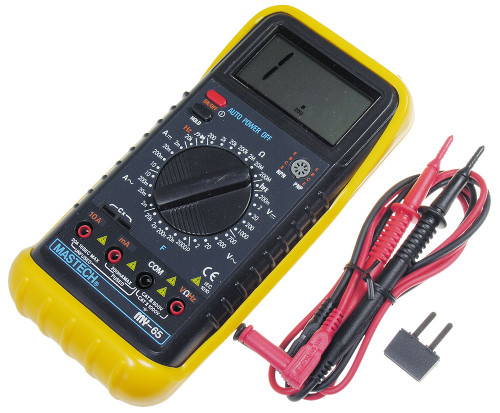
We will examine step by step, how to check the primary winding of the ignition coil with a multimeter:
- Turn on the multimeter mode measurement of resistance;
- Provisions of the multimeter touches the positive and minus contacts of the reel's primary winding. Depending on the manufacturer, normal resistance indicators may differ, on average, the normal resistance value is in the range of 0.5 - 2.0 ohms.
- If the resistance readings are approximate to zero - this means that a short circuit occurred in the ignition coil. If the indicator on the contrary is too big - this indicates a break in the primary winding of the coil.
Measuring the resistance testimony on the primary winding of the ignition coil, you can start measuring the resistance on the secondary winding.
We will analyze step by step, how to check the secondary winding of the ignition coil with a multimeter:
- Turn on the multimeter all the same resistance measurement mode;
- One dipstick touches the positive contact of the primary winding, and the second to the high voltage contact.
- Indicators must be within 6-15 com, they can, sandwiched depending on the type and manufacturer of the coil.
A defective ignition coil can be extremely negatively affecting the work and service life of both the ignition system elements and the engine itself.
Tips of motorists
- On modern cars, the elements of the ignition system should not be checked by "Dedovsky" methods. The use of such methods with a high probability will cause malfunction and malfunction in the electronics of the car.
- Clean the high-voltage wires should be alone, so as not to get confused.
- All high voltage wires coming on spark plugs must be adjusted. In the absence of numbering, it is recommended to do it yourself.
- High voltage wires should be kept in pure form - it will largely increase their service life and reduce the likelihood of isolation breakdown.
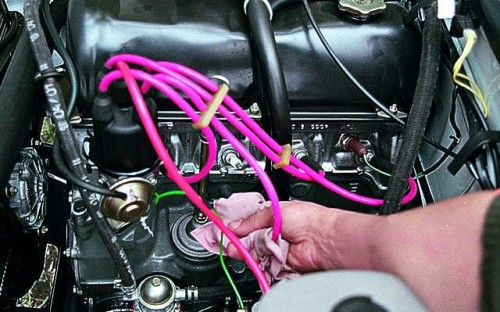
- The resistance of high-voltage wires varies depending on the length and thickness of the wire itself.
Related Materials
- Stove 2110, bad warm stove 2110, VAZ 2110 heating system, repairing the heating system VAZ 2110 with their own hands
- VAZ 2114 stove blows with cold air, stove 2114, bad warm stove VAZ 2114, device and repair of heating VAZ 2114 do-it-yourself, removing the stove VAZ 2114
- How to subdominize the car. How to put a jack. Types of jacks for cars.
- VAZ 2109 Fuse Block, VAZ 2109 Fuse Block Carburetor, VAZ 2109 Fuse Block Injector, Old VAZ 2109 Fuse Block, VAZ 2109 Fuse Block, VAZ Fuse Block 2109
- Car exhaust gas catalyst, faulty catalyst, pluses and cons of the catalyst, how to change the catalyst on the planeencitel
- Stove blowing cold air VAZ 2114, badly blowing the stove VAZ 2114, why badly blowing the stove VAZ 2114
- How to find out the owner of the car by the number of his car, check the car by the number of the traffic police machine, check the car by the state number of the car for free
- How to choose Used tires, Useful Tips
- Winter car road, pressure in passenger car tires in winter, good battery for the car in winter, whether to warm the car in winter
- In winter, the car is poorly started. How to make a car in winter, do you need to warm up the car in winter, useful tips
- Economy fuel consumption machines, the most economical car consumption
- Tires brands for passenger cars, labeling of car tire labeling, residual passenger car tire protector, how to pick a tire on a car brand, car tire tread pattern
- Working transmission operation, mechanical gearbox clutch work, driving with manual gearbox, useful tips
- Rear beam Peugeot 206 sedan, rear beam device Peugeot 206. Rear beam Peugeot 206 Malfunction, repair of the rear beam Peugeot 206
- Diesel fuel in winter, additive for diesel fuel in winter, how to choose the best diesel fuel
- Diesel winter does not start. How to start diesel in winter, heating diesel in winter.
- Tire marking decoding for passenger cars, labeling wheels, how to choose the right tires on the disks
- Diesel engine in winter, launch of the diesel engine in winter, what oil to fill in a diesel engine in winter, useful tips
- LED backlight of the car, the backlight of the bottom of the car, the backlight of the legs in the car, the backlight in the door of the car, the backlight of the car is fine
- Recovered tires, bus tire, restored tire protector, can I use them
- Choose winter tires, which is a winter tires, which pressure in winter tires should be marked with winter tires, how to choose the right winter tires, the best winter tires 2019
- Steering rail rail, knock of steering rack, reasons for the knock and repair of the steering rack do it yourself
- Cameless car tires, a set for repair of tubeless tires, repair of the cannon-free tire do it yourself
- Russian tires, Russian tires Winter, Russian All-season tires, Voronezh AMTEL tires, Tires "Matador Omsk Tire", Kama-tires are world-class bus
- How to open a car without a key. Lost the key from the car what to do, the key from the car inside the car
- Silent tires, quiet winter tires, quiet studded bus, which tires to choose, overview tires
- Tires and safety, safety of the bus, why it is necessary to constantly monitor car tires
- Rust converter which is better for cars, rust converters to choose how to use rust transducer, professionals
- Polishing the body of the car do it yourself, how to choose a polishing paste, useful tips
- Engine durability, engine life, how to extend engine life
- Knock in the car. Knock when moving the car. What can knock in the car. How to determine the cause of the knock.
- ABS car, what is ABS car, ABS system malfunction, ABS diagnostics
- Overtaking a car when you can start overtaking a car, rules of traffic rules
- Fuel pump VAZ 2110, VAZ 2110 gas station scheme, VAZ 2110 fuel pump device, VAZ 2110 gas station repair,
- Automotive antennas for radio, automotive antenna device, car antenna do it yourself
- Front suspension Kalina, device front suspension Kalina, knock in front suspension Kalina, repair of front suspension Kalina
- Shock absorber Oil, best oil shock absorbers, pumping oil shock absorbers, how to properly pump oil shock absorber
- Clutch malfunctions, touches clutch, causes a clutch malfunction, how to eliminate
- Viscounts of the fan, work uniforms of the fan, malfunction of the ventilator fan, repair of the ventilator fan
- Corrosion of car thresholds, film on car thresholds, how to stick a film on the thresholds of the car
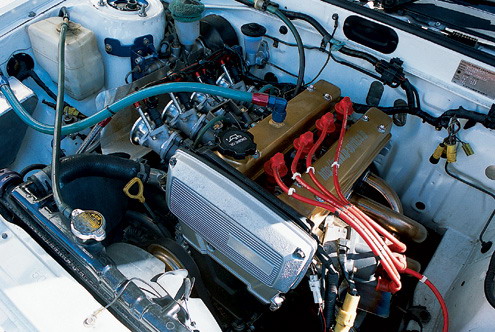
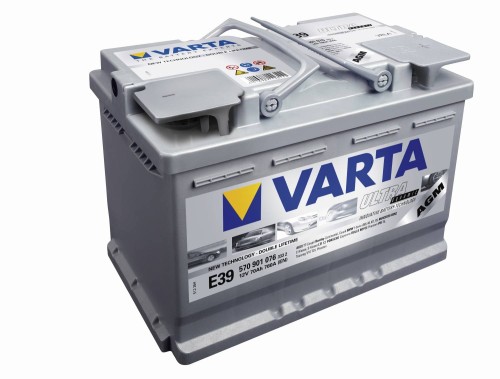
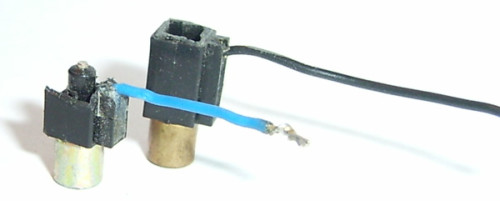







Comments